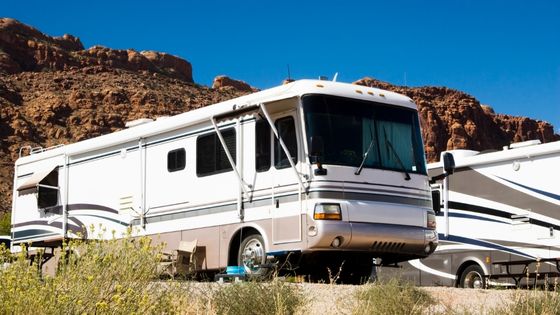With soaring fuel prices in India and such expensive car repairs, the last thing you want to worry about is your car breaking down. Therefore, it becomes a necessity to protect your investment. Checking the fluid levels and making sure the tires are properly inflated may be all it takes to keep your cars running longer.
Here, we have brought you a thoroughly researched guideline that you could follow to keep your vehicle up and running for a lot longer than it has to be, whether it is a personal vehicle like a honda civic or a commercial one like Tata Yodha:

1. Consult your car’s guidebook for recommended maintenance intervals.
Maintaining the suggested maintenance plan for your automobile can help you prevent expensive complications with the cooling system, drive train, suspension, and other components; doing so also helps you get the most out of the manufacturer’s warranty.
2. Avoid taking short trips.
The environment, your gas mileage, and engines all are negatively impacted by cold starts. Additionally, short trips can substantially reduce the lifespan of your muffler. Basically, when you start a cold engine, condensation forms in the exhaust. If you don’t let the condensation drain completely out of the system, too much water can build up in your muffler and corrode a rip through it. For instance, don’t start a cold automobile only to get it into the garage. For a change, think about walking to the nearby store. Combine quick errands, and if you have more than one car, use the one you’ve been in most recently the next time you go out. Do drive your car at least once every two weeks or so since vehicles that sit for longer periods of time have various issues, such as fluids slowly emptying from systems. Talk to a mechanic if you plan to store an automobile for a long time.
3. Examine the fluids.
You should routinely check your braking, gearbox, power steering, antifreeze, and oil levels. You should do this after you refuel. Even if your automobile isn’t currently leaking fluids, one might happen at any time, and you can spot it by regularly monitoring the fluid levels. Check the hue of some of these fluids as well. Some of these come with dipsticks and transparent plastic tanks that you can see through.
Pink, green, or yellow antifreeze should be used (pink for newer vehicles with “Dex-Cool,” green for older vehicles with ordinary ethyl-glycol, and green or yellow for vehicles cleaned and filled with universal antifreeze). Always flush dark antifreeze since it likely contains both rust and a lot of debris.
4. Maintaining frequent oil changes.
This will safeguard your engine and increase your gas mileage. Depending on the type of oil you use and your driving habits, the suggested interval between oil changes is between 3,000 and 5,000 miles (or 5000 and 8000 kilometers) or every three to six months. [4] By doing this, you might be able to get your car to 200,000 miles. The oil filter should also be changed at the same time since it makes no sense to put new oil through a filthy filter. Oil filters are inexpensive and are available at any auto parts store.
Check your car’s owner’s handbook or get in touch with the dealership for your car’s make if you’re unclear about how frequently to replace your oil.
In general, completely synthetic oils and light driving circumstances will require less frequent oil changes than traditional oil and tough driving situations (such as short journeys, taxi/police/delivery use, extreme weather, and heavy loads).
5. Air filter replacement.
With just a few basic tools, you can complete this task quickly at home. Perhaps a screwdriver is needed. Your owner’s handbook will explain where your air filter is, and you can get a matching filter at almost any auto parts store. Your car’s acceleration will be subpar, and its gas mileage will be marginally reduced by a dirty, dusty filter.
6. Flush the fluids regularly after every two years.
brake fluid, power steering fluid, and anti-freeze cooling system. Compare this schedule to your owner’s handbook. Longer gaps between adjustments are often permitted in newer vehicles. At least every 50,000 miles, replace the gearbox fluid and filter. [8] Older fluids may leave your vehicle defenseless in dangerous situations since they don’t lubricate and cool parts, as well as the new fluid, does.
7. Keep an eye on the brake pad thickness and prevent the pads from becoming completely metal.
Your brake rotors (also known as “discs”) will be harmed as a result, maybe along with your calipers. Compared to pads, rotors and calipers cost a lot more to repair. While a brake pad is still attached to an automobile, there is no such thing as “cleaning” it since the friction between the pad and rotor will practically instantly remove any foreign material.
8. Rotate the tires.
The life of the tires is increased by shifting the position of the tires, which also lessens uneven wear and tear on the tread. The recommended rotation cycle is every 6,000–7,500 miles or twice a year. Rotate them front right to rear left and front left to rear right in a diagonal motion. However, the kind of tire and the vehicle’s powertrain can alter this pattern. You may find comprehensive rotation information in your vehicle’s handbook. Keep in mind that some tires, particularly those on sports automobiles, have a specific direction of rotation. They will mark this with a sizable arrow on the sidewall.
9. Maintain proper tire inflation.
Under-inflated tires can shorten tire life by 15% and impair fuel efficiency by perhaps 10%. Perhaps the simplest task is inflating tires, and tire gauges are inexpensively available from many retailers. Tire wear may be reduced, and these problems are avoided by checking your tire pressure every other time you fill up with gas. With a dime, check the wear on your tires. Lincoln should be facing down when you insert the penny into the tread. Your tires need to be replaced if the tread does not cover the top of his head. Basically, you need new tires if you can see Lincoln’s entire head.
10. Keep your front end straight.
You could require an alignment if you detect your car trembling while traveling at high speeds (not while braking, as shuddering while braking suggests warped rotors), or if the wear on your tires is uneven. This is crucial for increasing the lifespan of your tires and will maintain the tread for higher levels of safety.
Conclusion
Through this blog, we have brought you a 10-step guideline that you can follow to increase the life expectancy of your vehicle, whether commercial or non-commercial.

















